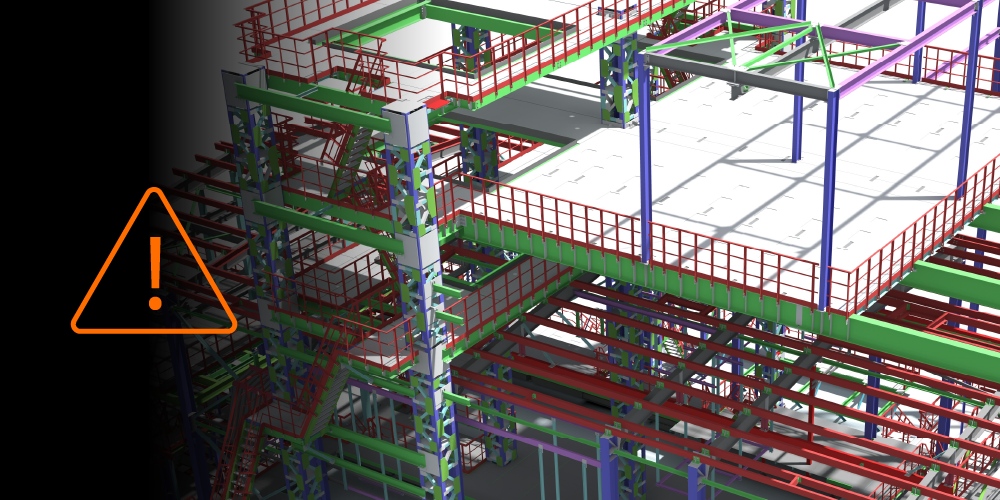Related Articles
— 8 min read
Construction Change Management: How to Minimise Risk and Maintain Control

Last Updated Aug 28, 2025

Josh Krissansen
48 articles
Josh Krissansen is a freelance writer with two years of experience contributing to Procore's educational library. He specialises in transforming complex construction concepts into clear, actionable insights for professionals in the industry.
Last Updated Aug 28, 2025

Change is inevitable in commercial construction projects. Even with detailed planning, variations can arise from shifting client needs, site conditions, or sequencing challenges.
These changes can lead to cost overruns, project delays, rework, and strained client relationships if left unmanaged. Construction change management provides a formal process to control and document variations, helping teams stay aligned and projects stay on track.
This article outlines the key components of construction change management and offers practical guidance to help teams apply it effectively on-site.
Table of contents
What is Construction Change Management?
Change management in construction refers to any alteration to the original scope of work after the project has commenced. It ensures all changes are identified, approved, and implemented to protect cost, time, and compliance outcomes.
Left unchecked, variations are a major cause of rework, margin erosion, and project disputes. A systematic process provides greater control, mitigates risks, and supports smoother project delivery.
This process applies to any deviation from the original contract, including:
- Design changes requested by the client
- Latent conditions or site-specific challenges
- Constructability issues identified by contractors
- Program impacts due to delays or resequencing
Every variation can impact scope, cost, timeline, subcontractor coordination, and resource planning. Consistent change management practices help teams respond confidently and clearly.
Why Change Management is Critical for Construction Projects
Even well-planned projects face unexpected decisions or site conditions that alter scope, budget, or timelines.
Variations can undermine coordination, financial tracking, and stakeholder alignment without a defined process. A structured change management approach helps maintain control over four critical project constraints.
Client Changes During Construction
Design alterations during construction are a frequent cause of variation. These may include late-stage preferences, evolving project requirements, or instructions submitted through technical queries (TQs) that introduce new scope elements.
Hidden Site Conditions
Issues such as unstable soil, buried services, or hazardous materials often emerge after works begin. These are typically not captured in early surveys or contract documentation and may require immediate redesign or structural adjustment.
Design Gaps and Ambiguities
Incomplete or conflicting construction contract documents can lead to unbuildable specifications or uncertainty on site. Ambiguous language, such as general references to standards without clear direction, often triggers requests for clarification and formal variation.
Regulatory Shifts and Compliance Issues
Changes to building codes or council requirements may affect previously approved designs. Shifting standards under the National Construction Code or compliance issues uncovered during inspection can also necessitate redesign or additional work.
Supply Chain Disruptions
Material shortages, price increases, and long lead times remain a constant risk. Delays caused by supplier insolvency or freight constraints often clash with project sequencing, leading to further variation.
Labour and Workforce Constraints
Skilled labour shortages, wage increases, and industrial action can all reduce available workforce capacity. Access restrictions and overlapping projects may further impact crew scheduling and site productivity.
Poor Scope Definition and Planning
An incomplete design brief or unclear project objectives can lead to ongoing scope changes. Lack of coordination during preconstruction often creates gaps that resurface later as costly variations.
Communication and Approval Delays
Delays in approvals, inconsistent information sharing, and misalignment between subcontractors can all lead to errors, rework, or missed sequencing windows that require formal change
Weather and Environmental Factors
Severe weather events, such as heavy rainfall or extreme heat, can disrupt excavation, concrete work, and site access. When delays extend beyond planned contingencies, resequencing is often required to recover progress.
Key Aspects of Change Management
Effective change management relies on several core components that help keep projects on track, financially sound, and client-focused. Managing these elements together gives contractors greater control over delivery and helps protect commercial outcomes.
Change Control
A formal approval process ensures only authorised changes move forward. This prevents scope creep and reduces the risk of misaligned expectations.
Change Order Management
A standardised method for pricing, submitting, and tracking variations supports accurate cost reporting and helps contractors recover associated expenses.
Communication
Clear communication protocols ensure all changes are shared with relevant stakeholders. This helps prevent rework and keeps subcontractors aligned with revised plans.
Documentation
Detailed records of all approved changes, impacts, and supporting decisions are essential for compliance, dispute resolution, and financial tracking.
Risk Management
Identifying risks linked to change allows teams to plan contingencies and resolve potential issues before they affect delivery.
Schedule Adherence
Assessing how changes impact sequencing and resource allocation helps teams reduce delays and keep progress on track.
Client Satisfaction
Timely and well-documented changes reflect operational maturity and reduce the risk of client-side friction.
The Construction Change Management Process
A defined workflow ensures every variation is assessed, approved, and delivered with oversight without disrupting delivery or undermining project outcomes. The following steps form the foundation of effective change management on-site.
- Identify. A potential change is recognised, often due to design issues, site conditions, or new client instructions. No work should begin until the change has been formally reviewed.
- Document. The full scope of the variation must be detailed, including impacts on cost, timeline, and resources. Supporting evidence may include quotes, site diary entries, drawings, and daily reports.
- Review. The proposed change is submitted for assessment by the head contractor and client. Formal workflows help ensure each variation is viable and aligned with project objectives, while cost report integration reduces the risk of error.
- Negotiate. If scope or pricing is disputed, parties work to reach a revised agreement. This may involve sourcing alternatives, adjusting deliverables, or revising commercial terms. Final approval is required before work proceeds.
- Implement. Once approved, the variation must be communicated clearly to all affected parties. Updates to the program, budget, and project documentation are essential. Any subcontractor adjustments must link back to the original variation for billing accuracy.
This process keeps project teams aligned and ensures changes are delivered with control and accountability.
Best Practices for Successful Construction Change Management
Managing change effectively requires more than a documented process. It depends on consistent execution, clear roles, and proactive planning.
These best practices help project teams manage variations without disrupting delivery, compromising quality, or damaging client relationships.
1. Establish Clear Procedures and Roles
Change management should be embedded in your project framework from day one. Start by:
- Defining who is responsible for identifying, documenting, reviewing, and approving variations
- Embedding these responsibilities into the project onboarding and contract documents
- Training teams and subcontractors on the full variation process, including expectations for documentation and timing.
Contract terms should also be reviewed and tailored to anticipate change, especially for time and materials or cost-plus arrangements. Clear roles prevent confusion and reduce the risk of variations proceeding without oversight.
2. Control and Track Every Change Order
Capture all variations in a central register and track them from submission to final billing. No change should proceed without written signoff. To maintain control:
- Link subcontractor claims directly to the originating head contract variation
- Consolidate approved changes into one monthly claim for streamlined billing
- Review the variation log frequently to ensure changes are delivered, documented, and paid.
A consistent tracking process helps teams avoid billing disputes and improves cost visibility across the project lifecycle.
3. Document Everything, Every Time
Each change must be supported by accurate documentation that reflects its full impact. This includes scope adjustments, cost implications, and program or sequencing changes.
Use site diaries, daily reports, and updated drawings to capture real-time data.
Pro Tip
Maintain version control for all specifications. Keep as-built drawings up to date. Store documentation in a central digital system accessible to all relevant stakeholders. Standard templates for variation submissions and reporting reduce admin time and ensure consistency.
4. Communicate Early and Often
Changes should never catch your team off guard. Set up one central platform for managing project communication and notify relevant stakeholders as soon as a variation is considered.
Before any variation is actioned:
- Confirm the change and revised scope with subcontractors and suppliers
- Communicate updated timelines and deliverables to affected teams
- Include open variations as a standing item in coordination meetings
Pro Tip
Tailor the communication style to suit your audience, as some stakeholders will prefer detailed reports, others a quick verbal summary.
5. Manage Risk Proactively
Not all risks can be avoided, but much of them can be anticipated. During preconstruction, identify high-risk areas of the scope and flag them as potential variation drivers. To reduce the impact mid-project:
- Allocate a contingency budget of 5-10%
- Include formal risk reviews as part of the variation approval process
- Monitor WIP reports for early signs of cost blowouts or scheduling slippage
- Adjust risk plans monthly based on live project data
This approach allows teams to respond to change without reactive decision-making.
6. Keep the Schedule Moving
Every variation should be reviewed through the lens of time. Approved changes can affect critical path tasks, subcontractor availability, and resource sequencing.
To minimise disruption:
- Update lookahead schedules in real time
- Reschedule subcontractors as soon as variations are confirmed
- Adjust procurement plans to align with revised timelines
- Monitor downstream effects, even after the immediate issue is resolved.
The sooner the schedule is adjusted, the better your chances of staying on track.
7. Protect and Strengthen Client Relationships
Change is one of the most visible parts of project delivery. A poorly managed variation undermines trust, while a clear and professional process builds confidence.
To reinforce trust:
- Secure written client approval before any changed work begins
- Integrate variation data into progress claims and project financials
- Use WIP snapshots to provide clear visibility on cost-to-complete
- Treat every variation as an opportunity to demonstrate control and transparency.
When managed well, variations show the client that your team can adapt without compromising on outcomes.
Strong construction change management protects delivery, cost, and client relationships.
Construction projects rarely follow a straight path. Change management brings structure to that uncertainty, helping teams document variations clearly, control costs, maintain schedules, and build trust with stakeholders from start to finish.
Categories:
Written by

Josh Krissansen
48 articles
Josh Krissansen is a freelance writer with two years of experience contributing to Procore's educational library. He specialises in transforming complex construction concepts into clear, actionable insights for professionals in the industry.
View profileExplore more helpful resources

Managing Direct Costs in Construction: How Visibility Drives Profitability
Direct costs define the financial reality of every construction project. They cover the labour, materials, and equipment that drive delivery and determine profitability. But even the best-planned budgets can shift...

BIM Clash Detection: Reducing Rework, Delays, and Risk in Construction
Design clashes can be a significant hidden cost in construction, as each conflict between systems risks expensive rework, project delays, and reduced margins. BIM clash detection empowers teams to identify...

Next-Gen Job-Costing: Ready to Move? 5 Things to Consider Before You Get Started
In this three-part series, Quantity Surveyor turned Financial Solutions Specialist Clint Burgess uncovers the real-world gains for people, processes, and profits when businesses move from legacy to next-generation Enterprise Resource...

From Workarounds to Workflow: Solving Construction’s Legacy Job-Costing System Challenges with Next-Gen Tools
In this three-part series, Quantity Surveyor turned Financial Solutions Specialist Clint Burgess uncovers the real-world gains for people, processes, and profits when businesses move from legacy to next-generation Enterprise Resource...
